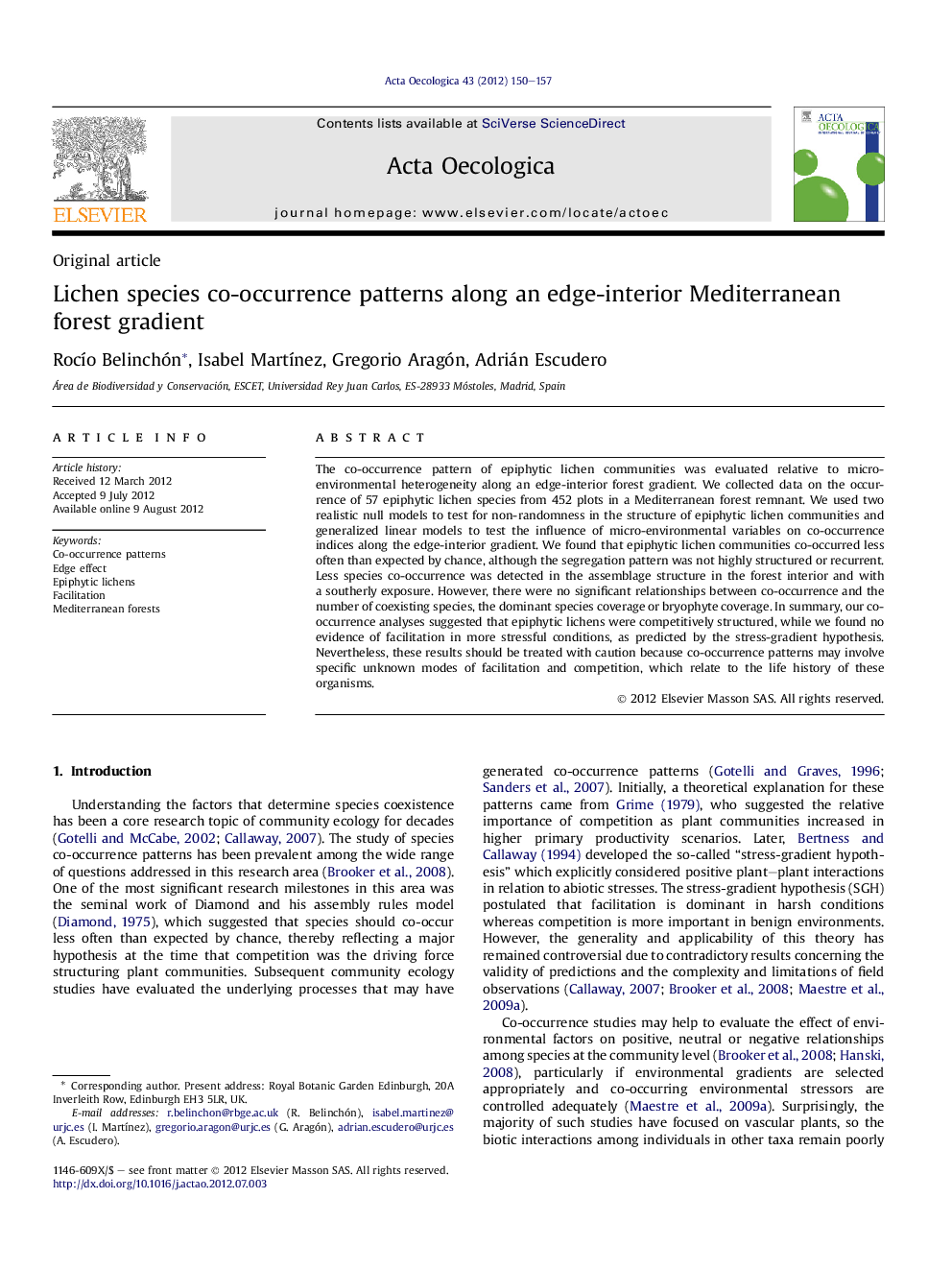| Article ID | Journal | Published Year | Pages | File Type |
|---|---|---|---|---|
| 4380872 | Acta Oecologica | 2012 | 8 Pages |
The co-occurrence pattern of epiphytic lichen communities was evaluated relative to micro-environmental heterogeneity along an edge-interior forest gradient. We collected data on the occurrence of 57 epiphytic lichen species from 452 plots in a Mediterranean forest remnant. We used two realistic null models to test for non-randomness in the structure of epiphytic lichen communities and generalized linear models to test the influence of micro-environmental variables on co-occurrence indices along the edge-interior gradient. We found that epiphytic lichen communities co-occurred less often than expected by chance, although the segregation pattern was not highly structured or recurrent. Less species co-occurrence was detected in the assemblage structure in the forest interior and with a southerly exposure. However, there were no significant relationships between co-occurrence and the number of coexisting species, the dominant species coverage or bryophyte coverage. In summary, our co-occurrence analyses suggested that epiphytic lichens were competitively structured, while we found no evidence of facilitation in more stressful conditions, as predicted by the stress-gradient hypothesis. Nevertheless, these results should be treated with caution because co-occurrence patterns may involve specific unknown modes of facilitation and competition, which relate to the life history of these organisms.
► We report epiphytic lichen communities were competitively structured. ► Less species co-occurrence was detected in the forest interior and south exposure. ► No evidence of facilitation in more stressful conditions. ► No influence of the number of coexisting species or the dominant species coverage.
